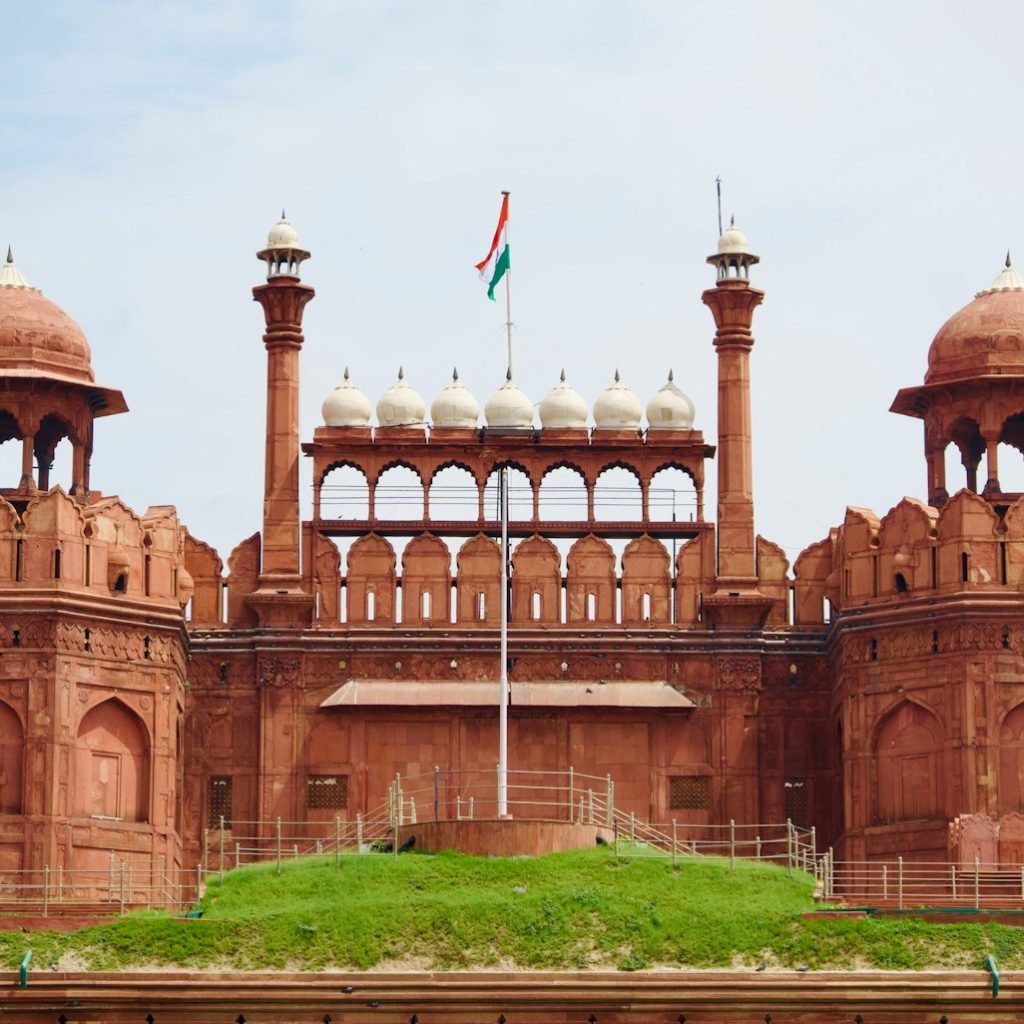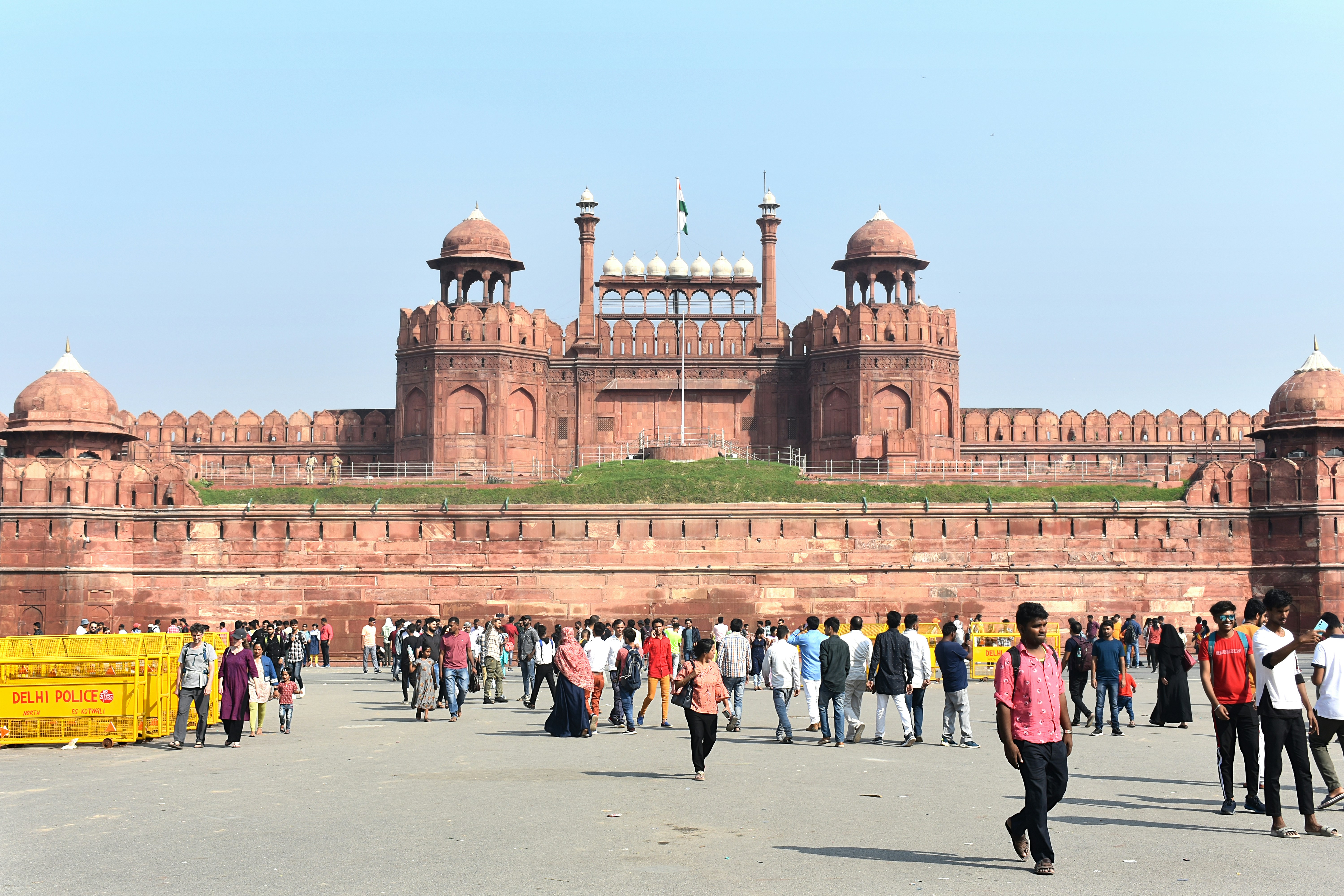
🏰 Introduction
Standing tall in the bustling heart of Old Delhi, the Red Fort (Lal Qila) is one of India’s most celebrated monuments and a UNESCO World Heritage Site. Built by the Mughal Emperor Shah Jahan in 1639, this massive fort complex of red sandstone stretches across 254 acres and has witnessed the ebb and flow of empires, colonial rule, and India’s independence movement.
Unlike many historic monuments that simply exist as relics, the Red Fort continues to live in the cultural memory of India. It is where emperors once held court, where the Peacock Throne once dazzled, and where the Prime Minister of India addresses the nation every Independence Day.
Here are 7 magnificent reasons why the Red Fort in Delhi is a must-visit for every traveler seeking to explore India’s glorious past.
1. Architectural Brilliance of Mughal Grandeur
The Red Fort is a masterpiece of Mughal architecture, showcasing a blend of Persian, Timurid, and Indian influences. Its towering walls, stretching up to 33 meters in height, were designed not only for defense but also as a statement of power and prestige.
Once inside the Lahori Gate, visitors are greeted by the Chatta Chowk, a covered bazaar where traders once sold luxury goods like silk, jewelry, and perfumes to the nobility. From here, pathways lead to architectural marvels such as:
- Diwan-i-Aam (Hall of Public Audience) – where the emperor addressed commoners and officials.
- Diwan-i-Khas (Hall of Private Audience) – once adorned with the legendary Peacock Throne.
- Rang Mahal (Palace of Colors) – famous for its painted walls and intricate mirror work.
- Mumtaz Mahal – now housing a museum of Mughal artifacts.
The fort is a living gallery of floral motifs, marble inlays, lattice screens (jalis), and pietra dura work, reflecting the unmatched artistry of Mughal craftsmen.
2. A UNESCO World Heritage Site
In 2007, UNESCO recognized the Red Fort as a World Heritage Site, citing its outstanding cultural and historical significance. This status ensures global attention, preservation efforts, and careful restoration of its monuments.
For travelers, this recognition is a guarantee that what they are witnessing is not just a local treasure but a world-class heritage site that continues to shape global understanding of Mughal architecture and history.
The fort’s urban planning, spatial symmetry, and fusion of Persian and Indian art represent some of the most important cultural exchanges of the 17th century.
3. A Symbol of India’s Freedom and Pride
Perhaps the most powerful reason to visit the Red Fort is its role as a symbol of Indian independence. After centuries of colonial rule, it was from the ramparts of this fort that India’s first Prime Minister, Jawaharlal Nehru, raised the national flag on 15th August 1947, declaring India’s freedom to the world.
Since then, the tradition continues—every Independence Day, the Prime Minister addresses the nation from its historic walls.
Walking through the fort is not just about admiring Mughal architecture—it is about standing on the same grounds where India’s freedom struggle found its most powerful expression.
4. Magnificent Palaces, Gardens, and Royal Luxury
The Red Fort wasn’t just a military citadel—it was a palatial city of royalty and extravagance. Within its walls lay sprawling palaces, marble pavilions, audience halls, and lush gardens designed in the Charbagh (four-part garden) style.
Highlights include:
- Rang Mahal (Palace of Colors): Believed to be the residence of royal women, it had flowing water channels and beautifully decorated chambers.
- Khas Mahal: The emperor’s private residence, featuring marble pavilions and richly carved ceilings.
- Shahi Hammam (Royal Baths): Luxurious bathhouses with mosaic patterns and marble floors.
- Hayat Bakhsh Bagh (Life-Bestowing Garden): A once-expansive garden with flowing water channels and fountains, designed for leisure and reflection.
These spaces provide a glimpse into the sumptuous lifestyle of Mughal royalty, where art and leisure blended seamlessly.
5. Cultural Experiences and Light & Sound Show
Unlike monuments that close their doors at sunset, the Red Fort comes alive in the evening with its spectacular Light and Sound Show. This 1-hour performance uses narration, dramatic lighting, and sound effects to retell 300 years of Mughal history, from Shah Jahan to Bahadur Shah Zafar—the last emperor.
Visitors are transported back in time as they listen to stories of royal grandeur, betrayal, wars, and the eventual fall of the Mughal dynasty.
Additionally, the fort often serves as a venue for cultural festivals, craft exhibitions, and fairs—making it not just a monument but a living cultural hub.
6. Museums and Exhibitions within the Fort
For those who want to go beyond architecture and delve into history, the Red Fort houses several museums:
- The Archaeological Museum: Exhibits Mughal-era artifacts, manuscripts, and weaponry.
- The Indian War Memorial Museum: Showcasing uniforms, arms, and ammunition from the British period and World Wars.
- The Museum of Freedom Movement: Dedicated to India’s struggle for independence.
These museums transform the fort into an educational journey, connecting Mughal history with colonial times and the fight for freedom.
7. Gateway to Old Delhi’s Cultural Treasures
The Red Fort’s location makes it an ideal starting point for exploring Old Delhi. Just outside its gates lies a vibrant world of history, food, and culture:
- Chandni Chowk: One of Delhi’s oldest and busiest markets, famous for traditional sweets, spices, fabrics, and jewelry.
- Jama Masjid: India’s largest mosque, built by Shah Jahan, only a short walk away.
- Raj Ghat: The memorial to Mahatma Gandhi, situated nearby on the banks of the Yamuna.
- Street Food Tours: From parathas at Paranthe Wali Gali to kebabs and jalebis, Old Delhi is a paradise for food lovers.
This proximity makes visiting the Red Fort not just about one monument but about experiencing the soul of Old Delhi.
🏆 Conclusion
The Red Fort in Delhi is more than a historical site—it is a living symbol of India’s culture, history, and pride. Whether you are captivated by its Mughal architecture, fascinated by its role in the independence struggle, or drawn to its museums and evening shows, the fort offers a multi-layered experience for every traveler.
Here are the 7 magnificent reasons why it’s a must-visit:
- Stunning Mughal architecture.
- UNESCO World Heritage recognition.
- Symbol of India’s freedom.
- Royal palaces and gardens.
- Cultural shows and festivals.
- Museums that connect past to present.
- Its vibrant location in Old Delhi.
👉 A visit to Delhi is simply incomplete without stepping into the majestic Red Fort, where every stone whispers a story of grandeur, struggle, and resilience.


0 Comment